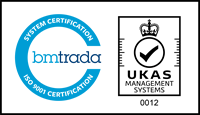Posted on: Monday September 11, 2017

How harmful can a disengaged workforce be to your business?
If your staff are disengaged they are going to be less productive. It sounds simple, and that’s because it is. Warwick University’s 2014 study into happiness and productivity shows us that the happier your staff are, the more engaged and productive they will be. It’s not just Warwick that have made this connection, top business leaders in the UK feel the same. In a recent report, The Business of Engagement, 10 senior business leaders in the UK revealed the dangers of a disengaged workforce and they highlighted that disengagement doesn’t start and end with happiness.
Here are some of the other pitfalls of a disengaged workforce that businesses should look out for. Luckily, all of these can be fixed relatively easily to ensure companies can get the most out of their (engaged) workforce.
Presenteeism or “I’m here because I have to be”
A lack of trust and consequent disengagement amongst employees can have devastating consequences for the productivity levels of a business. An unengaged employee is likely to be simply ‘going through the motions’ of their role, otherwise known as ‘presenteeism’. Turning up just to get the job done might keep your business ticking along but what leaders really want are the engaged staff who go above and beyond and are happy to turn up to the office on a Monday morning (and every other morning!). Research (CIPD) shows that the annual cost ‘presenteeism’ is twice that of absenteeism and has a considerable negative influence on effort and customer service, both of which affect a business’s bottom line considerably. So it is definitely something to look out for.
Lack of discretionary effort or “That’s not in my job description”
Here at Personal Group we define employee engagement as “Unlocking discretionary effort”. These employees are happy to work for you so will go the extra mile to help the business and themselves. A lack of engagement can also result in lack of discretionary effort, or a lack of overall effort– causing productivity levels to decrease. When it comes down to it, how many of your staff are engaged enough to chip in and help the company in times of need? If they aren’t willing to stay an extra ten minutes to finish something off, spend an extra 5 minutes on the phone to a customer resolving a problem or put the extra effort in to help a colleague in need, then you might need to consider why and ask how can you better engage them to unlock more of that discretionary effort.
Poor customer service or “Not my problem”
It is perhaps unsurprising that lack of discretionary effort amongst disengaged employees can affect customer service, which could be detrimental to the profits of a business. On the other hand, fully engaged staff, more likely known as your brand ambassadors, can boost both customer satisfaction and the bottom line.
A good example of this is E.ON UK. They recently explained how they identified the important link between engaged employees and improved customer service levels, and the business has worked to create a peer-to-peer recognition scheme. The scheme works by encouraging employees to personify the company values and rewarding them with a buzz in the form of a ‘thank you’ e-card for going the extra mile within their given role. E.ON UK has seen a boost in customer satisfaction as a result. Chief Executive Tony Cocker said of the scheme: “[Employee recognition is] part of our performance management toolkit and very much about customer focus and customer satisfaction.”
So what can you do?
Businesses may think it is impossible to engage with every single employee, but a focus on strong leadership, teamwork and the creation of a nurturing workplace culture are key to making this happen.
A report from Wills Towers Watson’s, Global Trends in Employee Attraction, Retention and Engagement, showed that leadership ranked as the most important driver of employee engagement, meaning that a sincere interest in an employee’s wellbeing by leaders is vital for engagement success. The role of a leader is to support staff in every aspect of their workplace experience, from the creation of training programmes to development opportunities and generally aiding them to better understand their role in the business.
Company culture is the place to start. Business leaders need to work on creating an organisational culture that nurtures employees and strives to genuinely listen to their needs and inputs. It’s only when leaders are transparent in their approach to employee engagement and seek to involve their workforces in every aspect of their business strategy, can they expect engagement, productivity and profits to rise.
To find out more about how Personal Group can help support your workforce wellbeing, contact us or email letschat@personalgroup.com.
Cost vs Value – What Really Matters in Health Benefits?
When it comes to creating employee health benefits, there’s always a tug-of-war between keeping costs low and focusing on the actual value those benefits bring.
Posted on: 11 April 2025 by Andrew Walker, New Business Development Director
Top Tips to Improve a Misfiring Recognition Strategy
Whether you’re a professional footballer, engineer or care worker, happiness at work relies on feeling valued, appreciated and respected.
Posted on: 28 March 2025 by Andrew Walker, New Business Development Director
Brace Yourselves: Reward Storm Incoming
In even the most optimistic assessment of the current situation, it is hard to foresee a situation where a substantial portion of workers are not left underwhelmed by their pay offers in 2025.
Posted on: 13 March 2025






